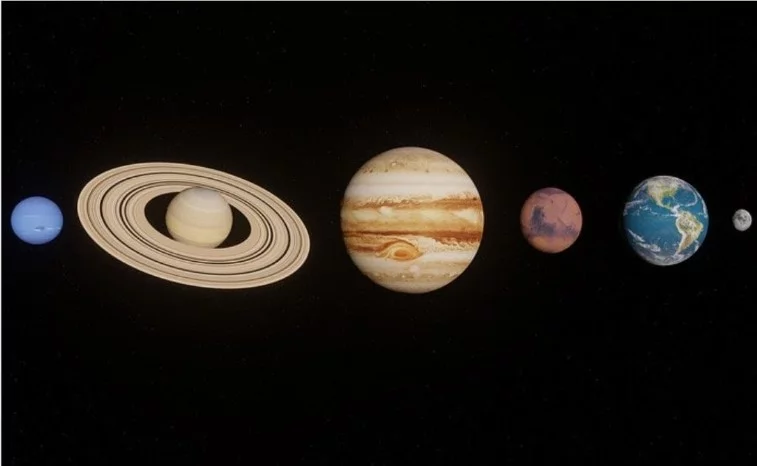Planetary Alignment: Illustration made by Sky Safari

By the end of August, Sky Safari created an illustration showing us a cool image of our planets almost conveniently positioned for the perfect observation, but astronomers across the globe waited patiently for days for them to occupy an even better mutual position.
The correct term here is a so-called planetary alignment that, by the way, had already begun. Journalists call planetary alignment differently: a parade of planets, and it occurs when three or more planets can be seen in the sky on one clear night.
According to the number of visible planets, there is:
- a mini planetary alignment when three planets are seen in one line,
- then there is a minor planetary alignment with four planets,
- and a major alignment when five or six planets are visible in the sky.
Finally, there is a complete planetary alignment and then seven planets are visible!

Let’s immediately add two important notes:
- professional astronomers are completely indifferent to such alignments because they have no scientific significance – except maybe for some statistics and the like – because scientists are able to extract something interesting even from completely banal events and phenomena,
- and then, the planets are never, not even visually aligned exactly along an ideally straight line, but along the arc of the ecliptic (which is not very easy to see with the naked eye).
By the way, the ecliptic is the plane in which the Earth rotates around the Sun, and the other planets have a similar movement, i.e. with a slight inclination towards the ecliptic plane.

Now here is our case. On August 28, just before sunrise, as many as six planets shone in our night sky, namely Mercury, Mars, Jupiter, Uranus, Neptune and Saturn.
Due to its proximity to the Sun, Mercury is never, and even in this case, not particularly suitable for observation, but the next two planets, Mars and Jupiter, are.
This was an unusual event just because it was visible with the naked eye. Let’s get ahead of the wise: if it’s clear and far from artificial lighting – and it’s beautiful!
However, you can always just take a pair of binoculars if you want to see Jupiter’s large satellites, which is always a nice experience.
And if you want to see the Great Red Spot on this largest planet, you will need a solid amateur telescope, but it is definitely a good investment to enjoy on your own or even with your loved ones.
For Uranus and Neptune, take a telescope as well, and Saturn will be accessible with the naked eye, although you can’t see its rings that way. Therefore, a telescope is also recommended for Saturn because of the rings, but also because of Titan, Saturn’s largest satellite.
This alignment was otherwise a warm-up before an even bigger event that awaits us on the last day of February next year, when seven planets will gather, that is, Mars, Jupiter, Uranus, Venus, Neptune, Mercury and Saturn.

You definitely don’t want to miss that one, so add a reminder or simply keep checking our blog for updates on upcoming mesmerizing events happening in the night sky above our heads.
Don’t forget to check out Sky Safari 6 Pro.
Want to read more about the universe? Visit our blog!

